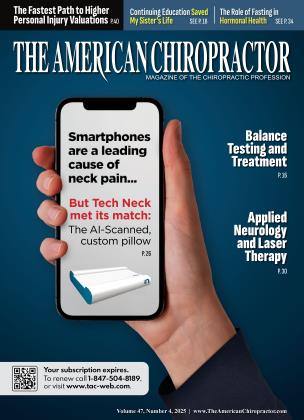BDNF, often celebrated as the brain’s growth factor, is critical in neuronal health, fostering growth, survival, and synaptic plasticity. Its contribution extends beyond cognition, memory, and emotional regulation; BDNF is a transformative factor in pain management. Promoting neural adaptability diminishes hypersensitivity and disrupts chronic pain-signaling pathways, particularly at the spinal cord level. This remarkable neurotrophin fosters spinal plasticity, reducing the intensity of pain perception. Strategies to enhance BDNF levels, such as exercise, mindfulness practices, chiropractic care, and targeted nutrition, represent a cornerstone of pain management.
Microglial cells, the brain’s immune sentinels, are equally pivotal. While these cells are integral to defending the brain from injury and infection, their overactivation can drive neuroinflammation, contributing to chronic pain and central sensitization. Calming overactive microglial cells reduces inflammation, restores neuronal stability, and alleviates pain. This immune modulation complements the neuroplasticity fostered by BDNF, offering a synergistic pathway to sustainable pain relief.
The interplay between pain, inflammation, and nutrition highlights the profound role of dietary interventions in managing pain and enhancing brain health. Omega-3 fatty acids, curcumin, magnesium L-threonate, and resveratrol have become pivotal nutrients influencing the biological pathways associated with pain perception and neuroplasticity.
Omega-3 fatty acids, rich in DHA and EPA, are renowned for their anti-inflammatory properties and ability to enhance BDNF levels. Stabilizing neuronal membranes and mitigating oxidative stress promotes synaptic resilience and reduces pain in arthritis and neuropathic pain.
Curcumin, the active compound in turmeric, offers a dual benefit by reducing oxidative stress and boosting BDNF expression. Its ability to modulate pro-inflammatory cytokines and disrupt pain signaling at central and peripheral levels underscores its therapeutic value in pain management.
Magnesium l-threonate, a unique form of magnesium that crosses the bloodbrain barrier, directly supports NMD A receptor function and synaptic density. Calming neuroinfl aimnation and enhancing BDNF expression mitigates pain in conditions such as migraines and fibromyalgia while promoting cognitive resilience.
Resveratrol, a potent polyphenol found in red grapes and berries, complements these interventions by stimulating BDNF and protecting neurons from oxidative damage. It modulates microglial cell activity, preventing overactivation and reducing chronic pain-related inflammation.
Together, these nutrients provide a comprehensive framework for reducing inflammation, supporting neuroplasticity, and improving acute and chronic pain outcomes.
Addressing the root causes of pain — neuroinflammation, oxidative stress, and hormonal dysregulation — will help these modalities work together to provide lasting relief.”
Low-level laser therapy (LETT) represents a paradigm shift in noninvasive pain management. By employing specific wavelengths of light, LEET stimulates mitochondrial cytochrome c oxidase to enhance ATP production. This boost in cellular energy promotes tissue repair, reduces inflammation, and fosters neurological resilience.
LLLT’s ability to upregulate BDNF amplifies its therapeutic effects, fostering synaptic regeneration and reducing hypersensitivity. Simultaneously, it calms overactive microglial cells, mitigating neuroinflammation and central sensitization. Furthermore, LLLT stabilizes NMD A receptor activity, protecting neurons from excitotoxicity while enhancing cognitive and neurological resilience.
When integrated with nutritional and lifestyle strategies, LLLT offers unparalleled therapeutic benefits. For instance, adaptogens, such as ashwagandha and rhodiola, regulate cortisol levels, reducing stress-driven inflammation. Omega-3 fatty acids complement LLLT by supporting cellular repair, while mindfulness practices restore parasympathetic balance, promoting emotional well-being.
The most effective pain management strategies adopt an integrative approach that combines advanced therapies like LLLT with receptor-based therapies, targeted nutrition, and lifestyle adjustments. This synergy potentially reduces pain and enhances cognitive function, emotional resilience, and overall quality of life. Addressing the root causes of pain — neuroinfl aimnation, oxidative stress, and hormonal dysregulation — will help these modalities work together to provide lasting relief.
Pain management has entered a new era of precision and personalization, combining advanced therapies like low-level laser therapy (LLLT), targeted nutrition, chiropractic adjustments, and soft tissue modalities to address pain at its cellular and neurological origins. By enhancing brain-derived neurotrophic factor (BDNF), regulating microglial cells, and stabilizing NMD A receptors, these interventions promote neuroplasticity, reduce inflammation, and restore the body’s capacity for self-healing.
This integrative approach extends beyond symptom relief, fostering resilience, cognitive health, and emotional well-being. By uniting cutting-edge technology with handson therapies and lifestyle strategies, the path to a pain-free, revitalized life becomes attainable and transformative. It is grounded in science, driven by care, and designed for renewal.

Dr. Brandon Brock, a Global Clinical Research Scholar from Harvard Medical School, has doctorates in Nursing and Chiropractic, Dr. Brock also has a Diplomate in Functional Neurology, Nutrition, Conventional Medicine, and Integrated Medicine, holding Fellowship status in Childhood Disorders, Neurology, Electro-diagnostic Medicine and Neurochemistry. His unique blend of clinical and teaching experience along with his diversified background have led to the demand as a wellness speaker for prominent holistic-oriented groups such as Nutri-West and Erchonia, amongst many others.
 View Full Issue
View Full Issue












